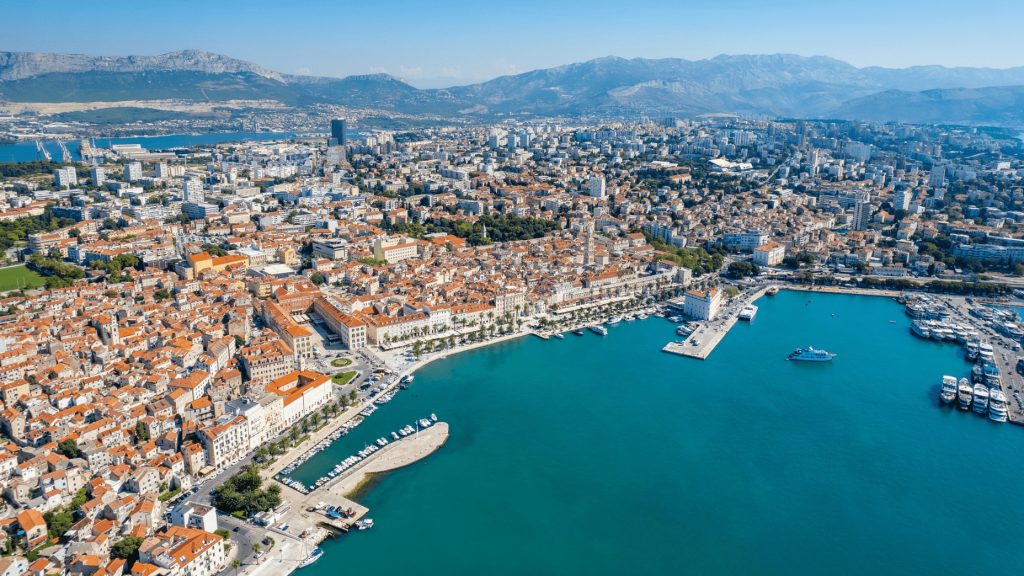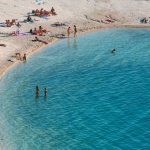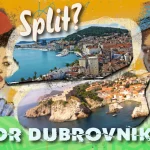Split is the second-largest city in Croatia and the largest city in the Dalmatia region and the Croatian Adriatic coast. Split has for many years been a transition hub, and fairly neglected by tourists. Nevertheless, in the last decade or so, Split has acquired quite a reputation and is becoming one of the most popular cities in Croatia. Split is most famous for Diocletian’s Palace which was built by a Roman Emperor Diocletian in 305 AD and is located in the heart of the city. Split is also very famous for its rich culture, music festivals, football club Hajduk, beautiful beaches, Marjan hill, and many other attractions. If your goal is to experience the beautiful Adriatic coast while also enjoying the vivid urban life and exploring rich history in combination with local cuisine and the Dalmatian way of life, Split is your place to go.
9.00 a.m. – 10.00 a.m.
The start of the day in Split, the capital of Dalmatia, always has to begin with a coffee. I suggest visiting some of the numerous cafes in the Split city center or along the Riva. Also, it is good to grab something to eat while you are on the way. If you are a bakery person, head to Bobis, Prerada, Krušćić, and Tradicija (locals call it Kirigin) with the latter specializing in sweet pastries. Another good tip would be to visit the local green market which is also located in the city center, next to Diocletian’s Palace. There you can find various stands with fresh fruits, vegetables, and other organic and homemade products. If you are keener on eating breakfast in a restaurant, Brasserie on 7 or Zinfandel should be on your list.
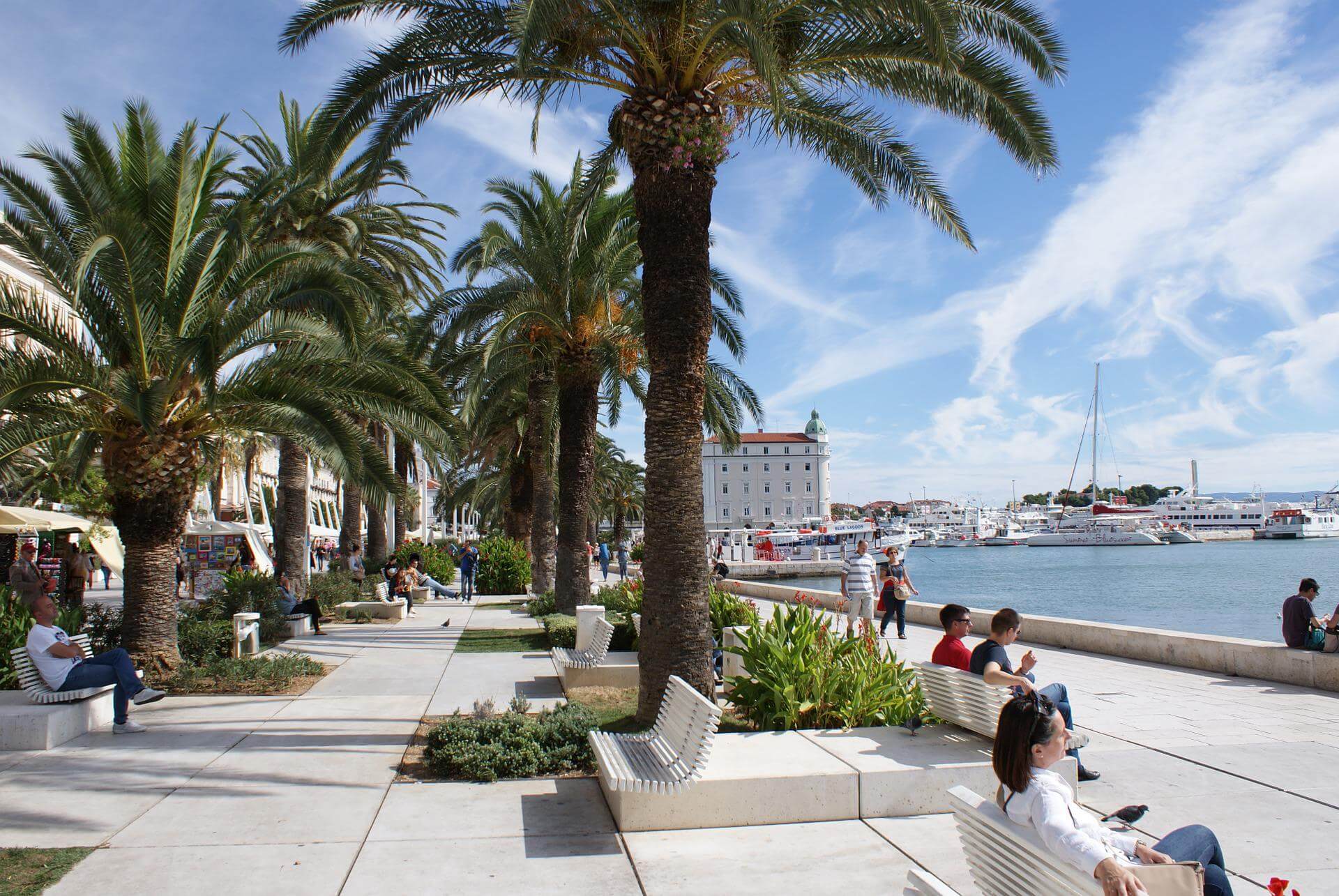
Split Riva ; source: Pixabay
10.00 a.m. – 13.00 a.m.
After eating a proper breakfast and drinking your morning coffee, I would recommend wandering around the city center and especially Diocletian’s Palace. There you have many city attractions such as the Saint Duje bell tower, Split city museum, Diocletian’s cellars, Split Ethnographic museum, Temple of Jupiter, and of course the main city square Peristil and neighboring Vestibul.
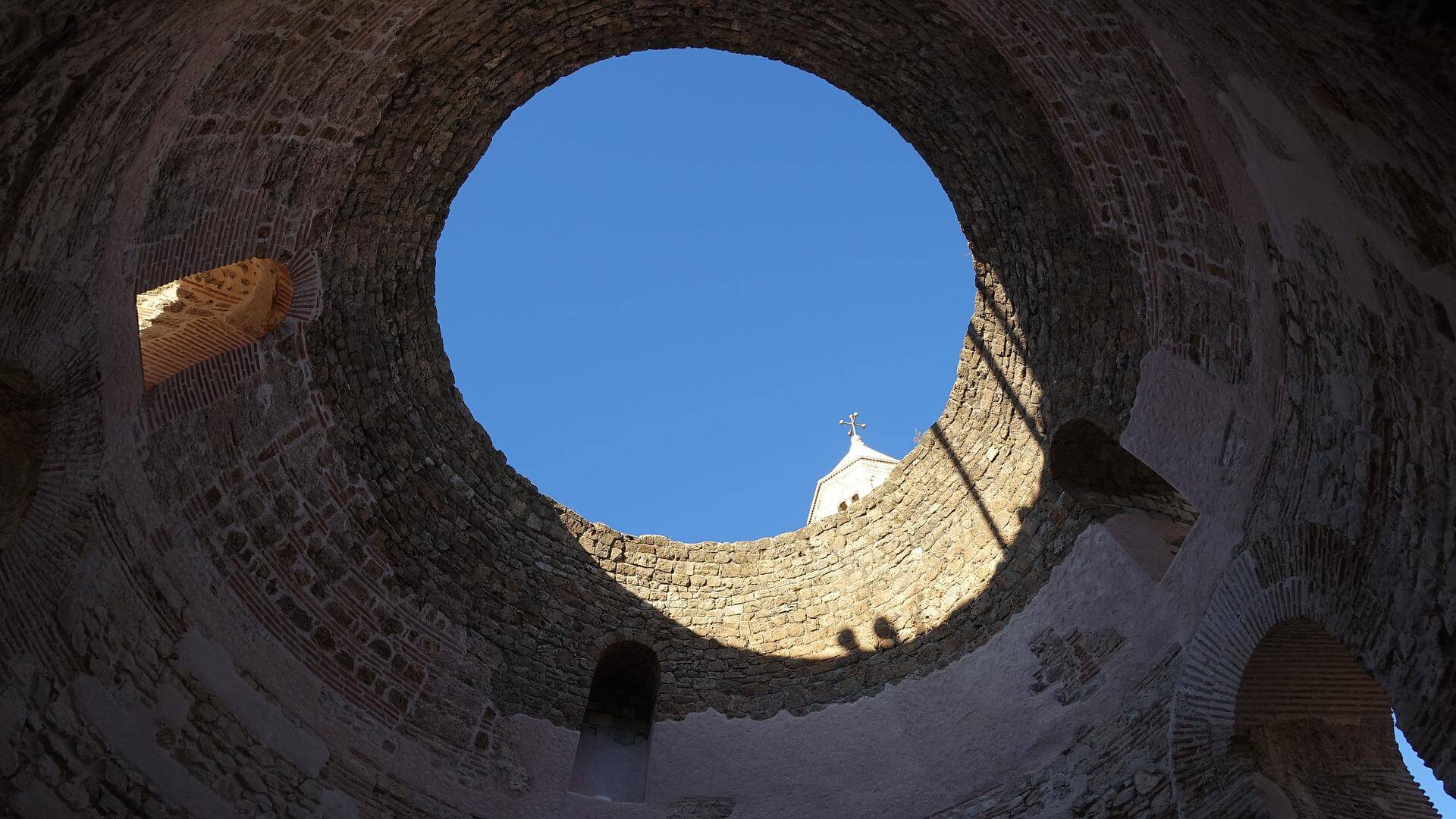
Vestibul ; source: Pixabay
Since it is not possible to visit all of the aforementioned city attractions, I will leave the choice up to you. Nevertheless, I would strongly recommend climbing up the St. Duje bell tower or at least the Vestibul (you can access it through the ethnographic museum) just to get a sense of the city and the surrounding islands.
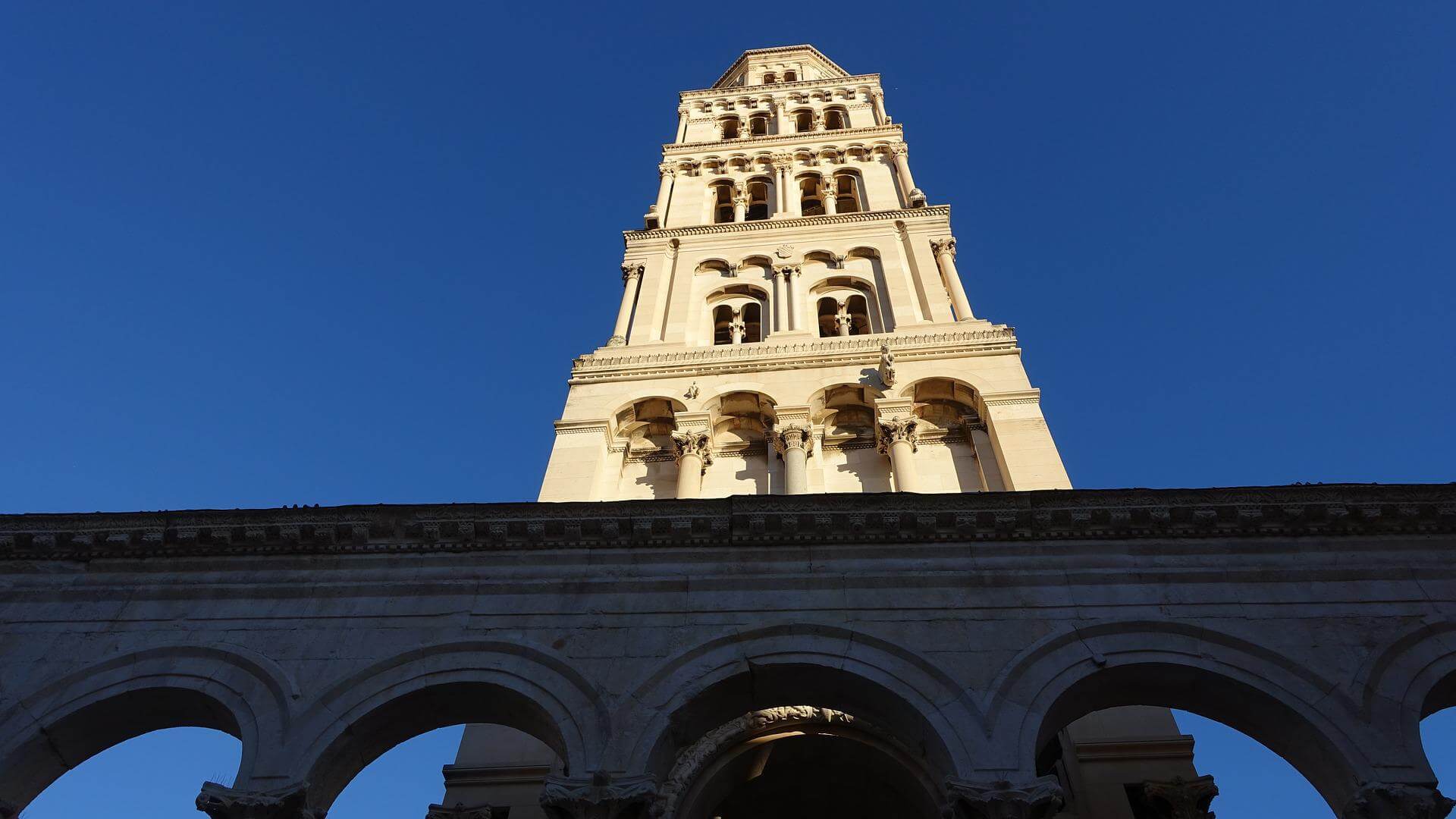
Saint Duje bell tower; source: Pixabay
10.00 a.m. – 13.00 p.m.
It is already lunchtime so it is time to try some of the well-praised local cuisine. There are numerous Dalmatian dishes that you should try, such as Dalmatian prosciutto and cheese, Pašticada, Gregada, Škampi na Buzaru, Peka (veal, octopus, or lamb), Fritule, Rožata, Soparnik, Viška pogača, Crni rižot (Squid Ink risotto) and many many more. Some of the well-praised local restaurants are the following: Konoba Varoš, Konoba Hvaranin, Šug, Zrno Soli, Adriatic, Uje, and Chops Grill, among many others. If you are traveling on a budget or you would just like to experience the street food of split, then check out this list.
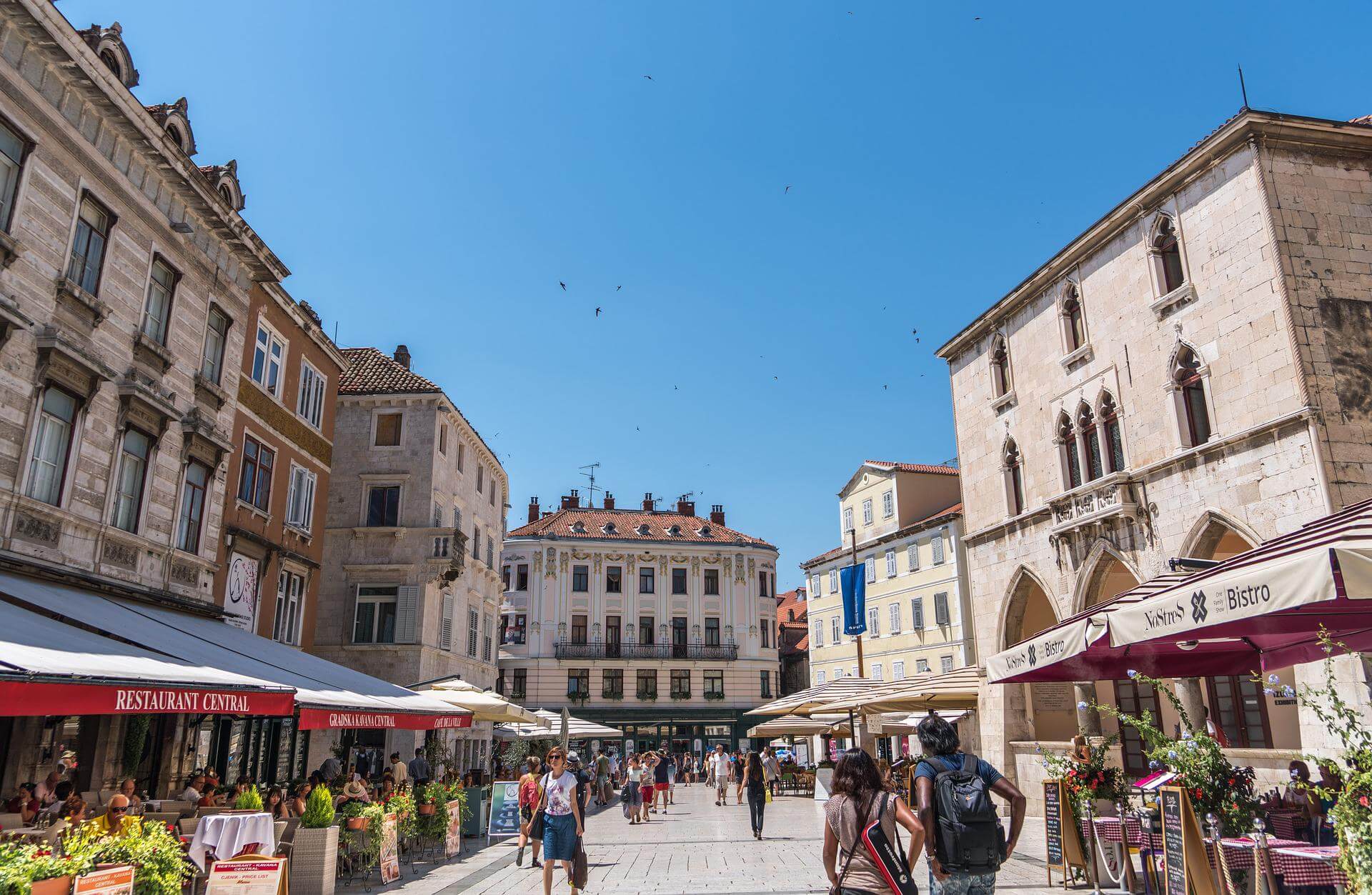
Pjaca; source: Pixabay
4.00 p.m. – 6.00 p.m.
After eating, it is a perfect time for an after-lunch stroll up the Marjan hill. You can access it through the Marjan stairs that lead you to Vidilica and from there to the St. Nicholas church. From there you can either continue further or if you are in the right mood you can climb up to the peak (takes around 30 minutes).
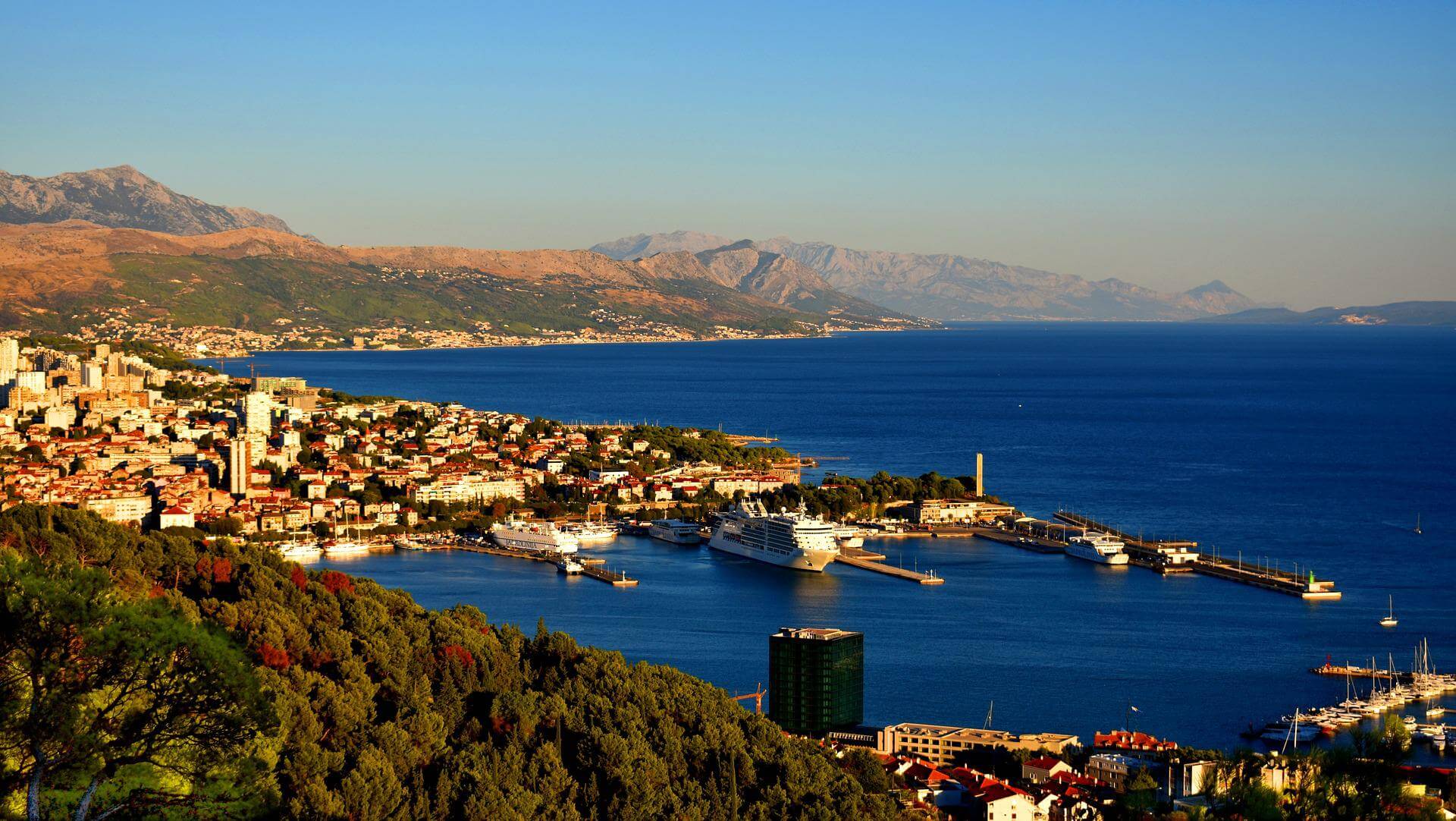
View from the Marjan Hill; source: Pixabay

hermitage of St. Cirijaka on Marjan; source: Pixabay
Besides the already mentioned Split city museum and the ethnographic museum which are in the city center, there are three other museums I would strongly suggest visiting. The first one is located close to the Marjan hill and it is the Museum of archaeological monuments. The second one is the Split archaeological museum located near the magnificent Poljud city stadium (home ground of Hajduk Split). Lastly, the third one is the Croatian Maritime Museum, located in the Baroque fortress of Gripe which is also a great place to visit (a 10-minute walk from the city center).
If you are visiting Split in the summertime, you should check out the beaches around the Marjan hill since these are the least crowdy and nature there is simply stunning. If you are into sports, you should head down to Bačvice or Firule beach where you will find locals playing a local game of picigin.
6.00 p.m. – 9:00 p.m.
It is time to head back to the city center, on your way you can visit Sustipan and Zvončac which are two small parks. From there you can walk along the Zapadna Obala (West Coast) towards the center. It is again time to experience local dishes preferably seafood accompanied by world praised Dalmatian wines. Split thrives in the evening and you can feel its energy on every corner, especially in the summer.
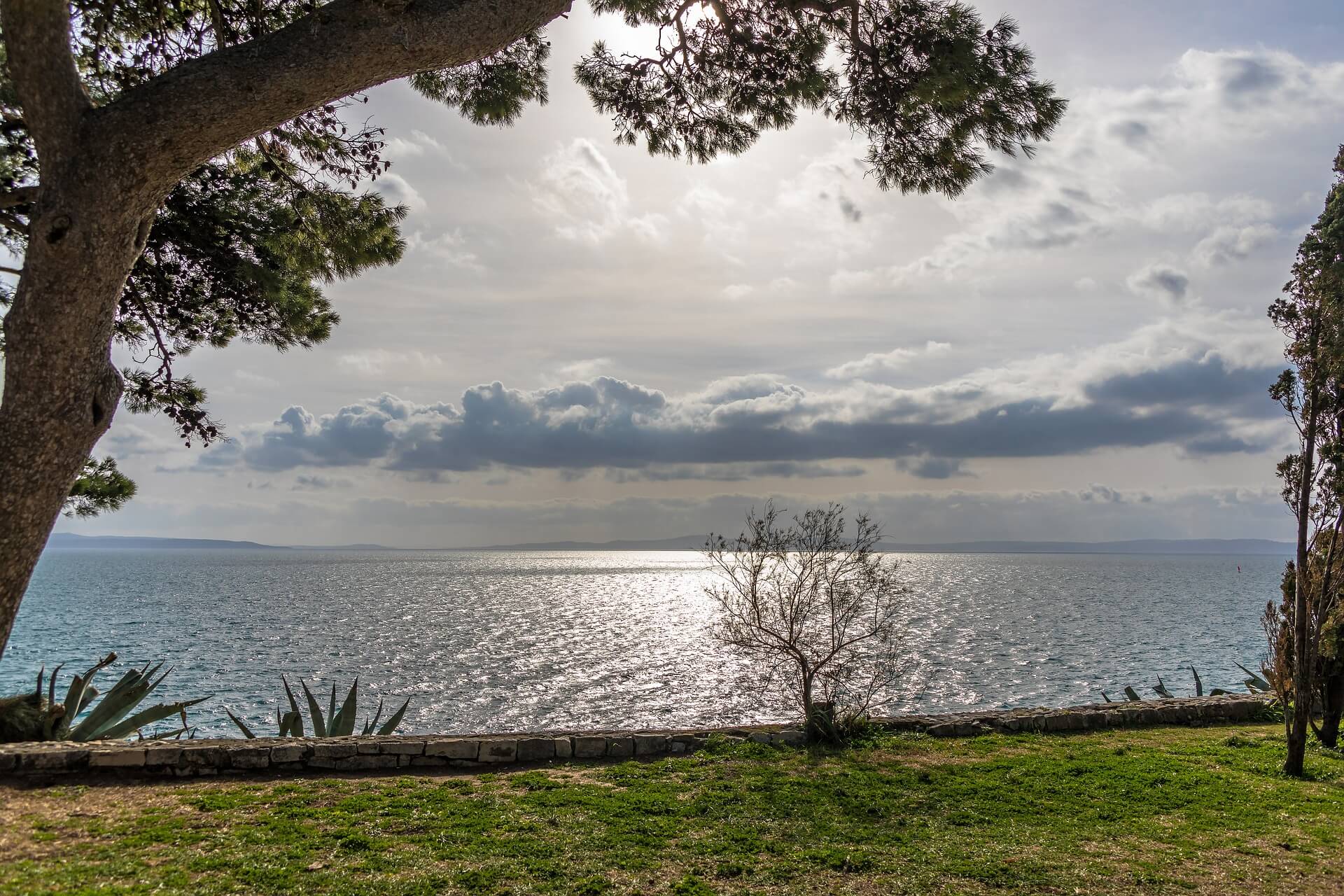
View from the Sustipan peninsula; source: Pixabay
There is always something happening in the city, bars such as Basket, Adriatic Social Club, Ghetto, Flag Pub, and Charlie’s are known for live performances and good music. On the other hand, there is Hrvatski Dom which offers a wide variety of classical music events. Split has a deep connection with music, and if you don’t know who Dino Dvornik or Oliver Dragojević are then please find out as quickly as possible. Needless to say that it is not a coincidence that Split is home to many music festivals such as Ultra Europe, Split Summer Festival, Split Festival, Split Blues Festival, Fibra Festival, Ego Free Festival, and Xstatic. There are also two important film festivals taking place in Split, Mediterranean Film Festival (June) and Split Film Festival (September).
9.00 p.m. – onwards
If you are still looking for action, then I suggest either staying in the city center where you can visit numerous bars and pubs and even end up in a club such as Kuka, Central or 305 AD. If you want to extend the nightlife even further and you don’t mind getting out of the center then you have two unique possibilities either going to the “Barbarinac Island of love” known in the slang as Barbados or hopping off to some boat party. These two venues happen only through summer and usually over the weekend.
That would be all for Split in 24 hours, to be honest, you should multiply these hours by at least 5 since this is undoubtedly one of the pearls on the Adriatic coast as well as in the Mediterranean.
If you want to find out more about Split, check out our dedicated section Split in a page 2022.
For more on travel in Croatia, follow TCN’s dedicated page.

